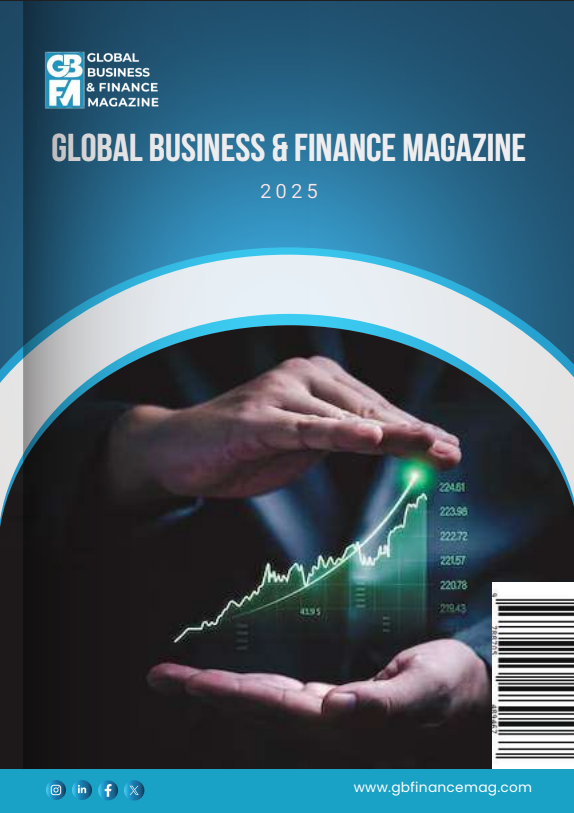The recent global rise in prices has renewed interest in the distributional effects of the Fisherian debt-inflation channel, and its impact on firms’ activities. This column examines this channel using a novel high-frequency identification strategy that analyses firms’ stock market returns around inflation announcement dates. It finds that, following positive inflation surprises, firms with higher long-term leverage experience relatively larger stock returns. This effect is stronger in countries with inefficient debt workout procedures, suggesting that inflation may serve as a substitute mechanism for resolving debt overhang problems in such jurisdictions.
The recent inflation surge has renewed interest in its impact on firms. One crucial channel through which inflation could influence firm activity is its interaction with nominal debt contracts. As highlighted by Keynes (1923) and Fisher (1933), inflation redistributes wealth from creditors to debtors by eroding the real value of long-term nominal liabilities. This mechanism — often referred to as the Fisherian channel — could alleviate financial constraints for leveraged firms, potentially stimulating investment and improving performance.
While recent macroeconomic models confirm the operation of the Fisherian debt-inflation channel (Gomes et al. 2016), empirical evidence directly linking inflation to firms’ debt structure and performance remains scarce. An exception is the recent contribution by Brunnermeier et al. (2023a, 2023b), which provides evidence of the real effects of the Fisherian channel — though in a rather unique context: German hyperinflation during the 1920s.
Inflation, debt, and stock returns
In a new paper (D’Andrea et al. 2025), we analyse how inflation affects the cross-section of stock returns, focusing on firms’ leverage and debt maturity structure. To estimate the impact of inflation on stock returns through the leverage channel, we exploit inflation surprises — i.e. the unexpected component of inflation releases — and use a high-frequency approach to isolate stock return reactions on days when inflation data are published. This method mitigates concerns about reverse causality (DeAngelo and Masulis 1980, Gordon 1984, D’Acunto et al. 2018) by ensuring that firms’ capital structures are ex-ante independent of the inflation surprises under study, while also minimising the influence of other business cycle indicators. Additionally, we examine whether and how the transmission of inflation surprises depends on the efficiency of corporate debt resolution processes (Jordà et al. 2022). Indeed, firms in countries with weaker legal systems may benefit more from inflation-induced debt relief, as resolving financial distress is more challenging in such jurisdictions.
Our primary analysis focuses on the US and the euro area from 2020 to 2022 — a period of sharply rising inflation (Figure 1). The dataset includes daily stock returns for non-financial firms listed on the S&P 500 and the EURO STOXX index, along with detailed firm-level balance sheet data from Standard & Poor’s Capital IQ. We supplement this with inflation data from Bloomberg and Thomson Reuters, as well as country-level indicators of corporate bankruptcy efficiency from the World Bank.
Figure 1 Annual inflation rate


Notes: This figure shows the evolution of the annual inflation rate for the US (grey line) and the euro area (black line). For the US, the rate is defined as the year-on-year growth rate of the Consumer Price Index (CPI). For the euro area, the rate is defined as the year-on-year growth rate of the Harmonised Index of Consumer Prices (HICP). Both series are displayed with monthly frequency and are expressed as percentages (%).
To construct survey-based inflation surprises and news calendars for our high-frequency study, we collect data on realised inflation and inflation expectations. For both the US and the euro area, we compute region-specific inflation surprises by subtracting expected inflation from realised inflation at each announcement date. In the US, the inflation rate is typically released around the second week of the following month. We retrieve the median expected annual inflation rate from Bloomberg surveys conducted among economists and market experts (e.g. Knox and Timmer 2023). For the euro area, we adapt our approach to account for the staggered release of inflation information across countries. We select the series of inflation surprises associated with the first country to publish this information, as these first-mover surprises provide the most informative content regarding the publication of flash estimates (García and Werner 2021). As a measure of expected inflation, we rely on the median expected annual Harmonised Index of Consumer Prices (HICP) inflation rate from the Thomson Reuters poll of professional forecasters. Figure 2 plots inflation surprises for the US (Panel A) and the euro area (Panel B), showing both monthly values and cumulative values.
Figure 2 Survey-based inflation surprises
Panel A US


Panel B Euro area


Notes: This figure shows the evolution of survey-based inflation surprises for the US (Panel A) and the euro area (Panel B). Inflation surprises are defined as the difference between the realised inflation rate and the median inflation expectation in a poll of professional forecasters. The black line depicts the monthly value of inflation surprises (left y-axis). The grey bars cumulate inflation surprises (right y-axis). Both series are displayed with monthly frequency and in percentages (%).
Our regression analysis yields three key findings:
- Inflation affects stock returns through leverage: firms with higher leverage experience significantly larger stock returns in response to positive inflation surprises. This effect is economically meaningful, corresponding to a higher annualised return of 13.1%.
- Long-term debt plays the most critical role: breaking down leverage into maturity buckets, we find that debt with a residual maturity of at least five years is the primary driver of stock return adjustments. This supports the Fisherian channel, where inflation benefits leveraged firms by reducing the real burden of their long-term debt.
- Judicial frictions: our analysis shows that the positive effect of inflation on leveraged firms is stronger in countries with relatively inefficient judicial systems for resolving corporate debt disputes. This suggests that inflation plays a larger role in alleviating debt overhang in jurisdictions where legal frictions worsen financial constraints. In these environments, inflation can serve as an alternative mechanism for debt relief, reducing the real burden of liabilities when legal resolutions are slow or costly.
Extending our analysis to 2014–2022, we find that the impact of inflation surprises on stock returns through the leverage channel is more pronounced during periods of high inflation persistence (see Figures 1 and 2). This, again, is consistent with the Fisherian channel: when inflation surprises become more persistent, they signal higher future price growth and have a stronger effect on the real value of nominal long-term liabilities.
Finally, while our primary measure of inflation surprise is survey-based, our results remain robust when using a market-based measure constructed from one-day changes in inflation-linked swap (ILS) rates. By exploiting the term structure of inflation-linked swap rates, we show that our channel is primarily driven by the medium-term (five-year) component of inflation surprises, rather than by short-lived surprises. This result further underscores the importance of persistent inflation surprises in driving the Fisherian debt-inflation channel.
Wrapping up
As inflation remains a central concern, understanding its effects on firms’ net worth and performance is crucial for economists and policymakers alike. Using a high-frequency identification strategy, our research finds that inflation surprises have a positive and significant impact on stock returns through a long-term leverage channel. Notably, our findings supporting the operation of the Fisherian debt-inflation channel are most relevant to periods of persistent inflation.
Our study is among the first empirical contributions to this topic and highlights the need for further research on the interaction between inflation, leverage, and institutional frictions, particularly in the context of debt overhang and financial distress resolution.
Source : VOXeu



































































